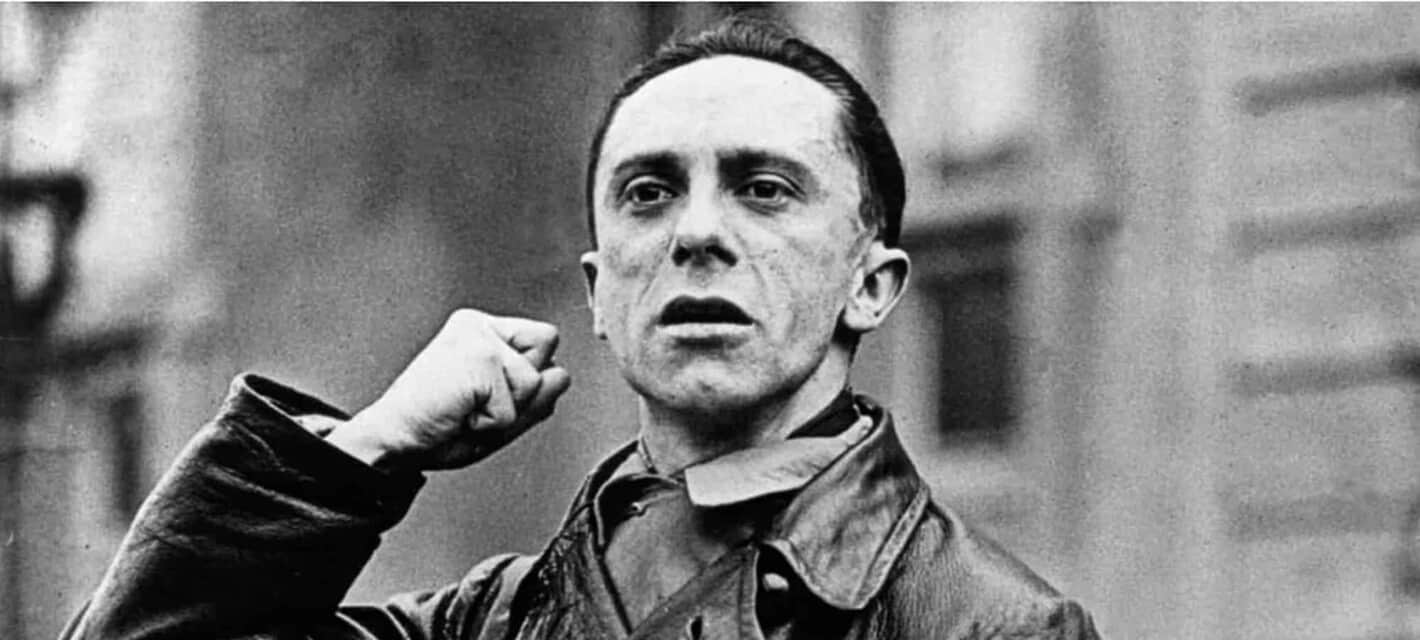Ah — The Art of War. Colorful, kitch, pulp propaganda posters created during the First and Second World Wars offer up an entertaining and sometime shocking insight to history. Their purpose and use by governments was very specific. It was used by British, United States, Canadian, French and other government’s alike. No other county stands out like Germany during World War II.

During that time, the head of the German Nazi’s Ministry of Public Enlightenment and Propaganda from 1933 – 1945 was a man by the name of, Joseph Goebbels. He was a politician and one of Adolf Hitler’s closest associates. Not unlike Hitler, he gave dazzling speeches and left audiences captivated. Most of his auditory themes were heavily laced with antisemitic rhetoric. He was unapologetic, purposeful and did not hesitate to share publicly his desire to rid the world of Jews.
His early ambition was to be an author. This was derailed when he fell headlong into a political career — added to which, he spent a number of years writing and unable to get published. During most of his time in politics, his ideals are hard to separate from Geobbels as an individual. After joining the Nazi Party in 1924, it took less than a decade for him to rise to the top ranks. By the time he was appointed head of the Propaganda Ministry, his story telling aspirations were used through radio, art and media — over which he held vast power.

Goebbels may have been in an adventitious position. When he first became a member of the Nazi Party, Hitler was on trial accused of treason. During the fiasco, Goebbels witnessed Hitler’s court case propel his ideology into the public sphere. At the same time, this was happening, the Nazi party took note of Goebbels failed ambitions. Offering him work as a news reporter gave him a glimmer of hope his literary aspirations were not lost. His focus on writing, however, was ultimately swallowed by political ideologies.
He at first broke with Hitler, albeit privately, over differing economic outlooks. This soon changed. Both men were in Munich giving speeches on the same day. They met and soon after Goebbels was confessing his admiration, love and unwavering loyalty to Hitler as if he embodied the meaning of life. It is not easy to argue the Nazi Party and Hitler did not fulfill Goebbles vocation. After meeting Hitler, his future was cast. Goebbles rose in the ranks. He used story telling to successful thrust propaganda into the forefront of people minds. Ideas he created spread like wildfire and shaped political and social thought.
Propaganda is defined as “information, especially of a biased or misleading nature, used to promote a political cause or point of view.” In many ways, there is no one better to compose fictional truth than someone who has a natural talent for spinning fictitious truths. Goebbles had his work cut out for him. His propaganda use departs from how it was employed at the beginning. From its conception, propaganda promoted ideas about religious fervor.

